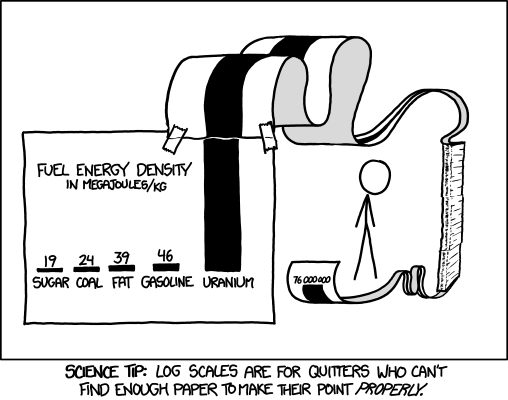507 private links
Consider uranium: the underrated element of awe //
Back to energy density: uranium metal really packs a punch. It is 1.67 times more dense than lead, and 1 kilogram of uranium-235 contains 2 to 3 million times the energy equivalent of 1 kg of oil or coal. This means that a relatively small quantity of nuclear fuel can produce significant amounts of energy through fission. How does uranium compare to other fuels? Calculations vary a little, but through fission, 1 kg of enriched uranium corresponds to roughly 10,000 kg of mineral oil or 14,000 kg of coal. That’s a lot of raw material that can be left in the ground. //
A single nuclear fuel pellet in a typical reactor creates about the same amount of energy as one tonne of coal. //
nuclear energy stands its ground. It’s reliable and dependable, with the highest capacity factor of all energy sources, which means that power plants produce maximum power more than 92% of the time during the year. That’s almost twice as much as natural gas and coal and nearly three times more than wind and solar farms.
Since less raw material is needed to create the same amount of power, nuclear energy also has a very small land footprint compared to the alternatives. More land is required to mine the coal and dig the metals and minerals used in wind turbines and solar panels out of the ground, and for the sites they are built on, which makes it the most land-efficient source of energy. //



